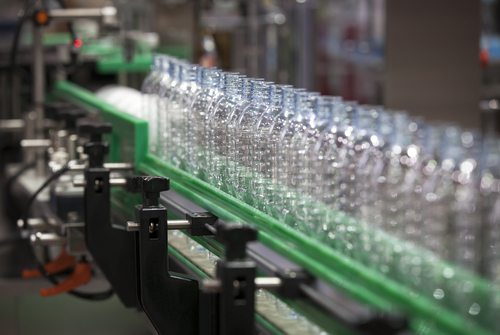
The American Chemistry Council’s Plastics Division laid out a series of goals related to recycling. | MOLPIX / Shutterstock
A major U.S. industry group has announced ambitious long-term goals related to the recycling of plastic packaging.
In a release issued this morning, the American Chemistry Council’s (ACC) Plastics Division laid out the following targets:
- 100 percent of plastics packaging is reused, recycled or recovered by 2040.
- 100 percent of plastics packaging is recyclable or recoverable by 2030.
- 100 percent of the U.S. manufacturing sites operated by ACC’s Plastics Division members will participate in Operation Clean Sweep-Blue by 2020, with all of their manufacturing sites across North America involved by 2022.
Operation Clean Sweep-Blue is a voluntary campaign designed to ensure plastic-handling operations take steps to reduce the loss of pellet, flake or powder into the environment.
“In setting these goals our industry is publicly affirming our vision of the future we want for safe, sanitary plastic packaging and our intention to get there quickly,” Steve Russell, ACC’s vice president of plastics, stated in the press release.
Hitting 100 percent recovery will require major movement on the part of the wider plastics industry. For instance, the U.S. plastic bottle recycling rate was 29.7 percent in 2016, the most recent year for which data is available. That represented a decrease of 1.4 percentage points from the year before.
The U.S. EPA pegged the nation’s overall plastics recycling rate for 2014 at just 9.5 percent (that number includes all type of plastics, not just packaging).
Russell and Rick Wagner, global sustainability manager at Chevron Phillips Chemical Company, held a press briefing on the announcement this morning.
On the call, Russell said that ACC is defining “recovery” to include a variety of methods, including pyrolysis, gasification systems and plastics-to-fuel technologies. He specifically mentioned Hefty’s EnergyBag program. “There are similar programs that will help communities collect and process materials that are not traditionally recycled,” Russell said.
He added that a variety of tools may be needed to bring more plastics into the recovery system. “Quite frankly, there may be a role for policy here,” he said. “We would prefer industry-led or voluntary initiatives. … We have previously not gone out and supported [extended producer responsibility] schemes. That remains our position, but we are open to thinking about ways the communities could finance growth in their systems and enable technology breakthroughs with our investment.”
According to an ACC press release, plastics producers will focus on multiple strategies to meet their goals. They’ll focus on designing new products for greater efficiency, recycling and reuse; developing new technologies and systems for collecting, sorting, recycling and recovering materials; making it easier for more consumers to participate in recycling and recovery programs; expanding the types of plastics collected and repurposed; aligning products with key end markets; and expanding awareness that used plastics are valuable resources awaiting their next use.
On the call, Russell said the time had come for his group to take a more active role on the recycling issue.
“We’ve been working for a long time at improving recycling, and we are dissatisfied at the rate it’s grown,” Russell said.
More stories about industry groups
- Plastics Pact supports chemical recycling as complementary
- APR alliance aligns global packaging design guidance
- APR applies pressure on PET imports, tariffs


